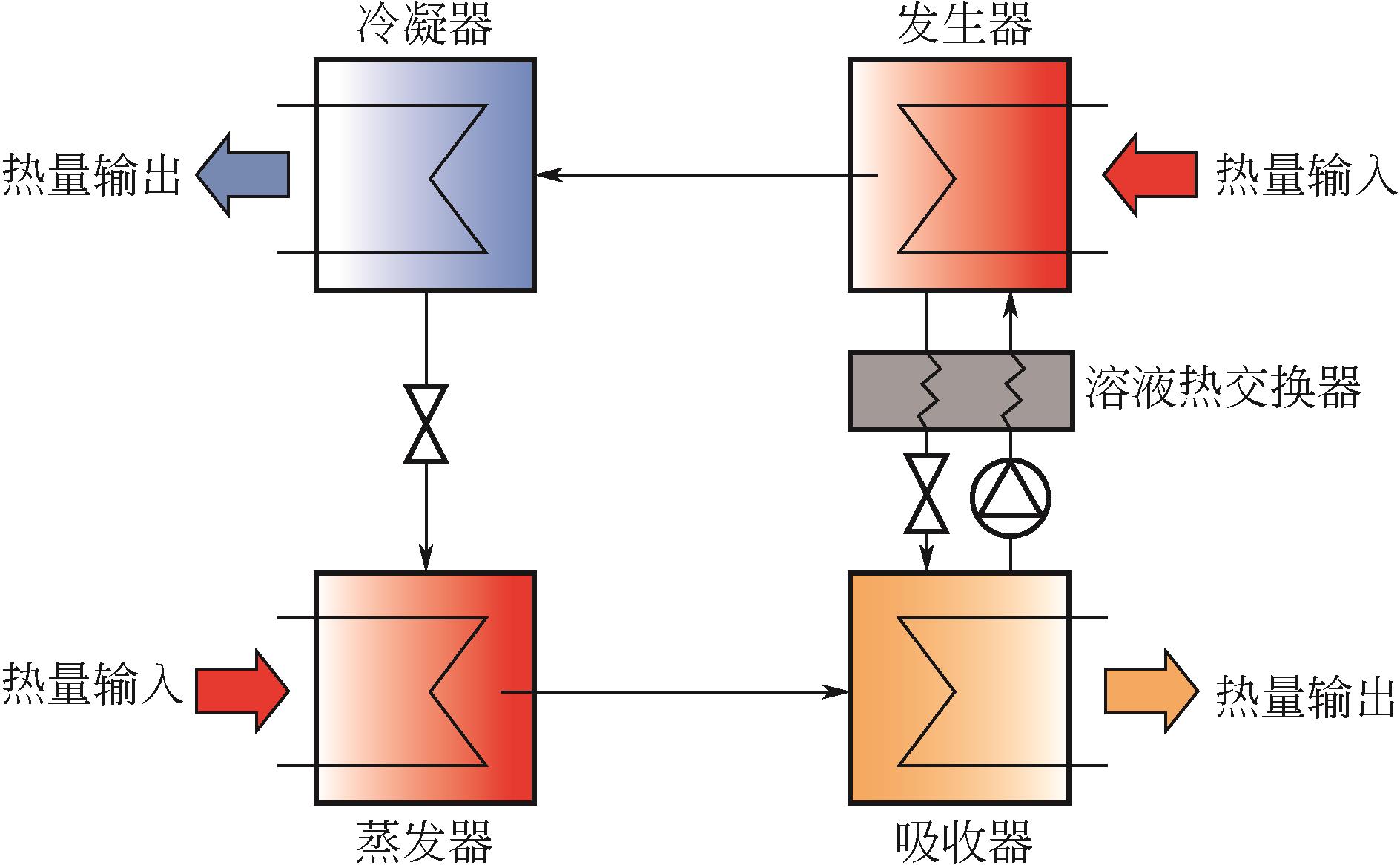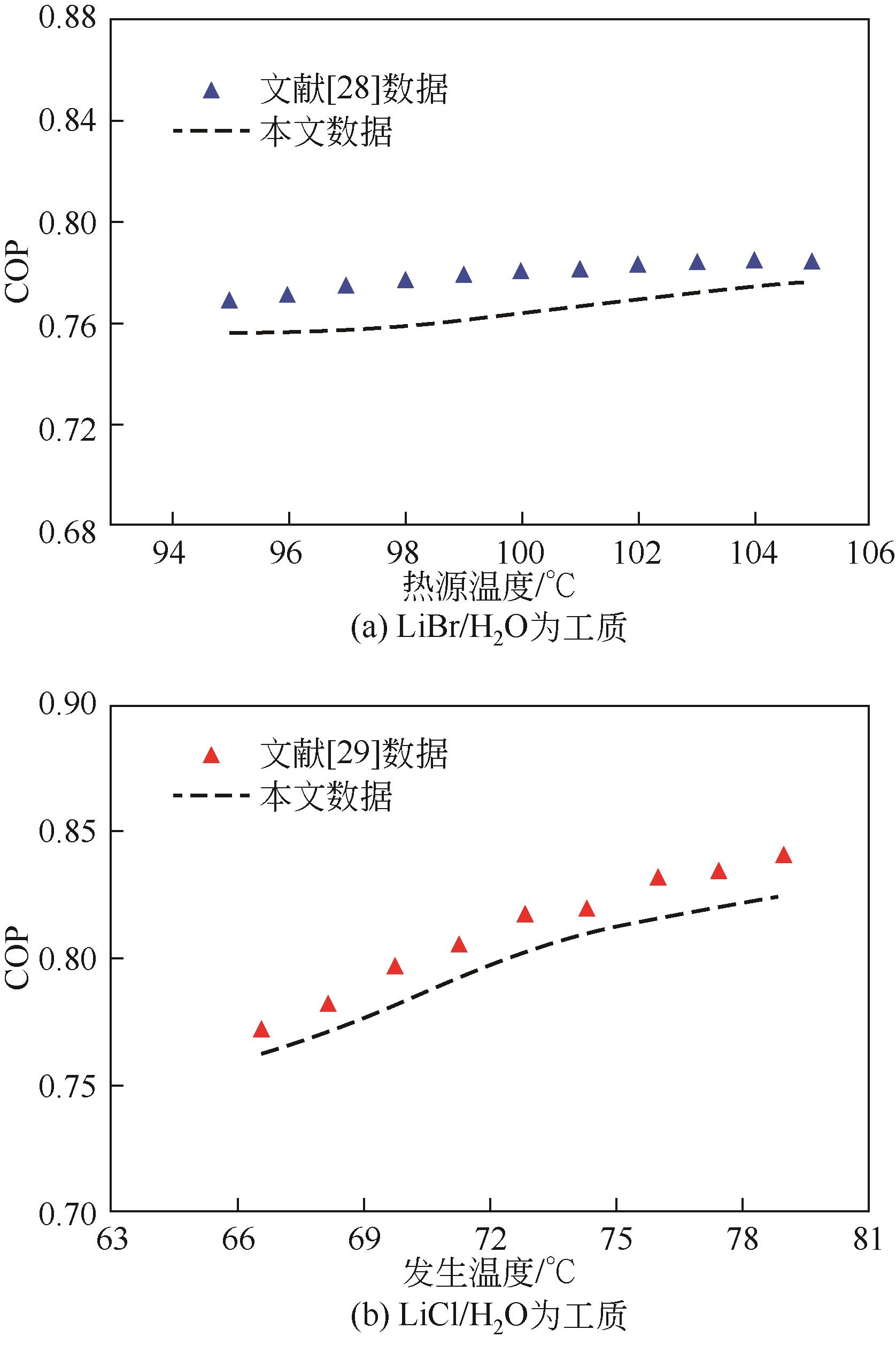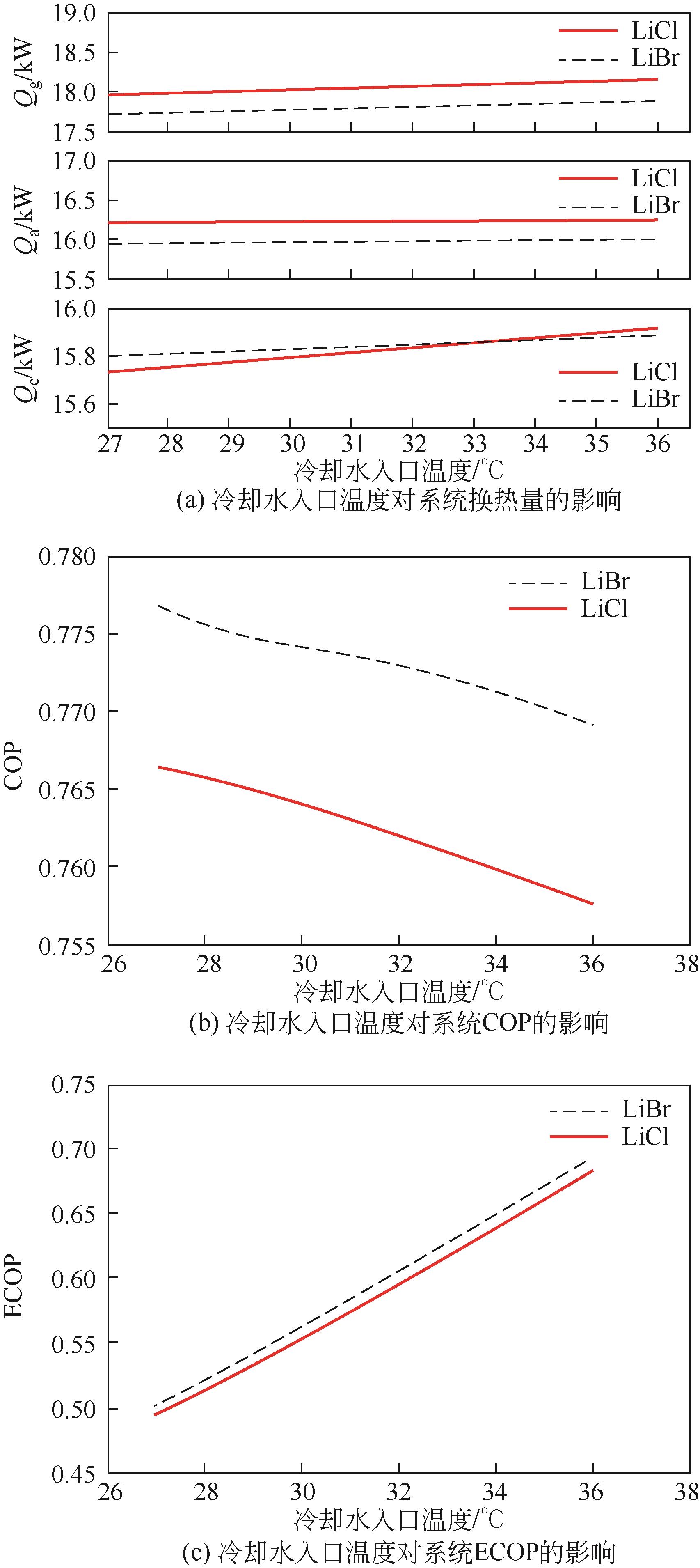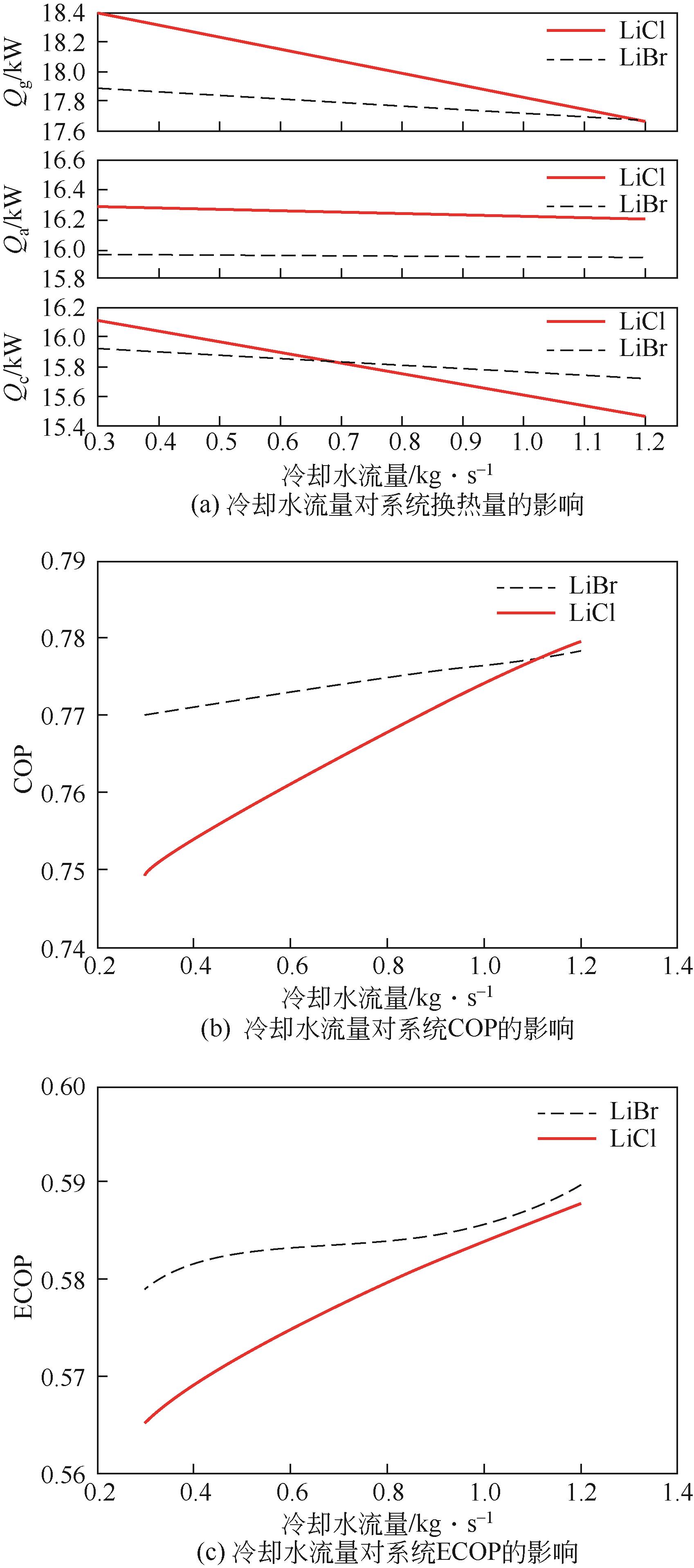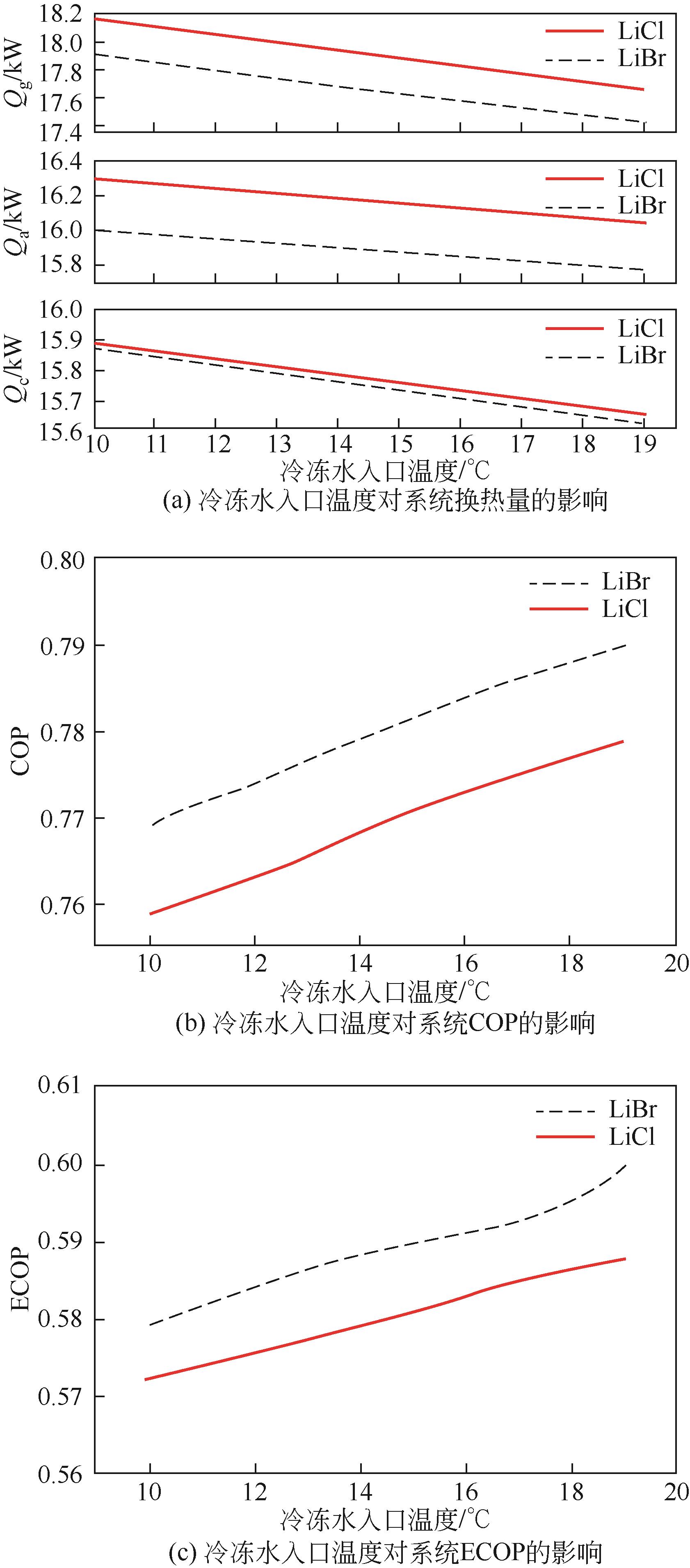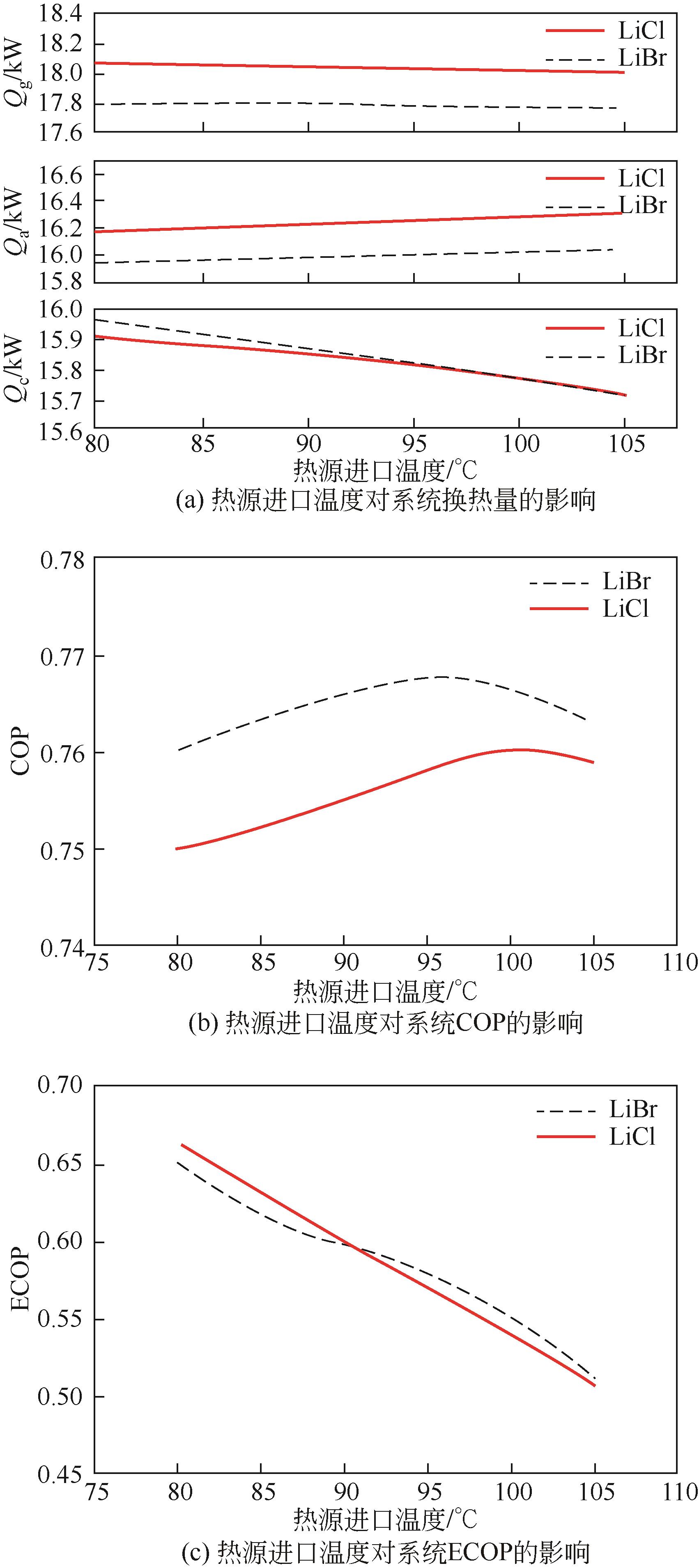| 1 |
张立国, 张红岩, 岳永亮, 等. 新型溴化锂吸收式制冷机的设计研究[J]. 流体机械, 2005, 33(8): 67-68, 27.
|
|
ZHANG Liguo, ZHANG Hongyan, YUE Yongliang, et al. Design of a new type of LiBr absorption chiller[J]. Fluid Machinery, 2005, 33(8): 67-68, 27.
|
| 2 |
王虹雅, 周勃, 黄诗雯, 等. 双效溴化锂吸收式热泵余热回收系统数值模拟研究[J]. 制冷与空调, 2021, 35(1): 32-36.
|
|
WANG Hongya, ZHOU Bo, HUANG Shiwen, et al. Numerical simulation study on waste heat recovery system of double-effect LiBr absorption heat pump[J]. Refrigeration & Air Conditioning, 2021, 35(1): 32-36.
|
| 3 |
SEARLE M, SHIRET A R. The opportunities for a new generation of high efficiency gas boiler[J]. Gas Engineering & Management, 1986, 26: 200-214.
|
| 4 |
LU Ding, CHEN Gaofei, GONG Maoqiong, et al. Thermodynamic and economic analysis of a gas-fired absorption heat pump for district heating with cascade recovery of flue gas waste heat[J]. Energy Conversion and Management, 2019, 185: 87-100.
|
| 5 |
安美燕, 赵心蕊, 徐震原, 等. 工业余热回收的耦合压缩-吸收式高温热泵循环[J]. 上海交通大学学报, 2021, 55(4): 434-443.
|
|
AN Meiyan, ZHAO Xinrui, XU Zhenyuan, et al. A hybrid compression-absorption high temperature heat pump cycles for industrial waste heat recovery[J]. Journal of Shanghai Jiao Tong University, 2021, 55(4): 434-443.
|
| 6 |
WANG Jian, SHANG Sheng, LI Xianting, et al. Dynamic performance analysis for an absorption chiller under different working conditions[J]. Applied Sciences, 2017, 7(8): 797.
|
| 7 |
DEHGHAN B B, APRILE M, PISTOCCHINI L, et al. Transient behavior assessments of a single-effect ammonia-water absorption heat pump system: Development of an efficient experimentally validated numerical framework[J]. International Journal of Heat and Mass Transfer, 2021, 177: 121252.
|
| 8 |
WU Zhangxiang, YOU Shijun, ZHANG Huan, et al. Experimental investigations and multi-objective optimization of an air-source absorption heat pump for residential district heating[J]. Energy Conversion and Management, 2021, 240: 114267.
|
| 9 |
成岭, 张婧, 金璐, 等. LiBr-H2O吸收式热泵的热力学分析[J]. 制冷学报, 2019, 40(1): 128-134.
|
|
CHENG Ling, ZHANG Jing, JIN Lu, et al. Thermodynamic analysis of LiBr-H2O absorption heat pump[J]. Journal of Refrigeration, 2019, 40(1): 128-134.
|
| 10 |
姜锁利, 王艳, 高玲, 等. 新型太阳能吸收式制冷系统发生器的研究[J]. 太阳能, 2008(5): 33-35.
|
|
JIANG Suoli, WANG Yan, GAO Ling, et al. Study on a new type of solar absorption refrigeration system generator[J]. Solar Energy, 2008(5): 33-35.
|
| 11 |
万忠民, 舒水明, 郭义明. 一种新的太阳能吸收式制冷系统中的蓄能技术[J]. 华中科技大学学报(自然科学版), 2002, 30(7): 14-16.
|
|
WAN Zhongmin, SHU Shuiming, GUO Yiming. A new technology for storaging energy in the solar absorption air-condition[J]. Journal of Huazhong University of Science and Technology, 2002, 30(7): 14-16.
|
| 12 |
AMAN J, HENSHAW P, TING D S. Enhanced exergy analysis of a bubble-pump-driven LiCl-H2O absorption air-conditioning system[J]. International Journal of Exergy, 2019, 28(4): 333.
|
| 13 |
JEONG S, KANG B H, KARNG S W. Dynamic simulation of an absorption heat pump for recovering low grade waste heat[J]. Applied Thermal Engineering, 1998, 18(1/2): 1-12.
|
| 14 |
PARHAM Kiyan, ATIKOL Ugur, YARI Mortaza, et al. Evaluation and optimization of single stage absorption chiller using (LiCl + H2O) as the working pair[J]. Advances in Mechanical Engineering, 2013, 5: 683157.
|
| 15 |
ZHU C, GLUESENKAMP K R, YANG Z, et al. Unified thermodynamic model to calculate COP of diverse sorption heat pump cycles: Adsorption, absorption, resorption, and multistep crystalline reactions[J]. International Journal of Refrigeration, 2019, 99: 382-392.
|
| 16 |
许玉杰, 张士杰, 肖云汉. 单效溴化锂吸收式制冷机动态特性及控制分析[J]. 中国电机工程学报, 2015, 35(S1): 105-112.
|
|
XU Yujie, ZHANG Shijie, XIAO Yunhan. Dynamic performance and control system analysis of the single-effect absorption chiller[J]. Proceedings of the CSEE, 2015, 35(S1): 105-112.
|
| 17 |
IRANMANESH A, MEHRABIAN M A. Dynamic simulation of a single-effect LiBr-H2O absorption refrigeration cycle considering the effects of thermal masses[J]. Energy and Buildings, 2013, 60: 47-59.
|
| 18 |
ŞENCAN Ş A, KOVACı T, DIKMEN E. A GEP model for energy and exergy analysis of LiCl-H2O absorption cooling systems[J]. Energy Sources, Part A: Recovery, Utilization, and Environmental Effects, 2021, 43(17): 2099-2108.
|
| 19 |
SHIN Y, SEO J A, CHO H W, et al. Simulation of dynamics and control of a double-effect LiBr-H2O absorption chiller[J]. Applied Thermal Engineering, 2009, 29(13): 2718-2725.
|
| 20 |
易晓勤. 常用溶液除湿剂的性质研究[D]. 北京: 清华大学, 2009.
|
|
YI Xiaoqin. Study on the characteristics of conventional liquid desiccants[D]. Beijing: Tsinghua University, 2009.
|
| 21 |
CHAUDHARI S K, PATIL K R. Thermodynamic properties of aqueous solutions of lithium chloride[J]. Physics and Chemistry of Liquids, 2002, 40(3): 317-325.
|
| 22 |
CONDE M R. Properties of aqueous solutions of lithium and calcium chlorides: Formulations for use in air conditioning equipment design[J]. International Journal of Thermal Sciences, 2004, 43(4): 367-382.
|
| 23 |
孙涛. 民用建筑溶液除湿节能研究设计[D]. 北京: 北京工业大学, 2015.
|
|
SUN Tao. Study & design on liquid desiccant air conditioning system for civil building energy saving[D]. Beijing: Beijing University of Technology, 2015.
|
| 24 |
梁凯. 内冷型LiCl溶液降膜除湿过程传热传质研究[D]. 济南: 山东大学, 2020.
|
|
LIANG Kai. Research on heat and mass transfer performance of internally-cooled falling-film dehumidification process of LiCl solution[D]. Jinan: Shandong University, 2020.
|
| 25 |
王刚. 吸收循环中溴化锂溶液热力参数与制冷特性耦合研究与分析[D]. 北京: 北京建筑工程学院, 2012.
|
|
WANG Gang. The researching and analysising about coupling of lithium bromide solution thermal parameters and refrigeration characteristics in absorption cycle[D]. Beijing: Beijing University of Civil Engineering and Architecture, 2012.
|
| 26 |
贾明生. 溴化锂水溶液的几个主要物性参数计算方程[J]. 湛江海洋大学学报, 2002, 22(3): 52-58.
|
|
JIA Mingsheng. Several main calculating equations of properties parameter of LiBr-H2O[J]. Journal of Zhanjiang Ocean University, 2002, 22(3): 52-58.
|
| 27 |
JEONG S, KANG B H, KARNG S W. Dynamic simulation of an absorption heat pump for recovering low grade waste heat[J]. Applied Thermal Engineering, 1998, 18(1/2): 1-12.
|
| 28 |
路哲. 单效溴化锂吸收式制冷系统的理论分析与模拟计算[D]. 南宁: 广西大学, 2017.
|
|
LU Zhe. The theoretical analysis and simulation calculation of the single-effect lithium bromide absorption refrigeration system[D]. Nanning: Guangxi University, 2017.
|
| 29 |
ŞENCAN Ş A, KOVACı T, DIKMEN E. A GEP model for energy and exergy analysis of LiCl-H2O absorption cooling systems[J]. Energy Sources A: Recovery, Utilization, and Environmental Effects, 2021, 43(17): 2099-2108.
|
 ), WANG Gang1,2, XIONG Yaxuan1(
), WANG Gang1,2, XIONG Yaxuan1( ), XU Qian3
), XU Qian3
 效的影响。结果表明,冷却水的入口温度、流量,冷冻水的入口温度,热源进口温度是吸收式制冷系统热力性能和
效的影响。结果表明,冷却水的入口温度、流量,冷冻水的入口温度,热源进口温度是吸收式制冷系统热力性能和 效率的主要影响因素;系统制冷系数(COP)随冷却水流量、冷冻水入口温度增加而增大,随冷却水进水温度增加而降低,在一定温度范围内,随热源温度升高而增大;
效率的主要影响因素;系统制冷系数(COP)随冷却水流量、冷冻水入口温度增加而增大,随冷却水进水温度增加而降低,在一定温度范围内,随热源温度升高而增大; 效率(ECOP)随冷却水进水温度、冷却水流量和冷冻水入口温度增加而增大,随热源温度增加而降低。LiBr水溶液和LiCl水溶液单效吸收式制冷系统的COP最高分别为0.789和0.779;ECOP最高分别为0.694和0.684。
效率(ECOP)随冷却水进水温度、冷却水流量和冷冻水入口温度增加而增大,随热源温度增加而降低。LiBr水溶液和LiCl水溶液单效吸收式制冷系统的COP最高分别为0.789和0.779;ECOP最高分别为0.694和0.684。